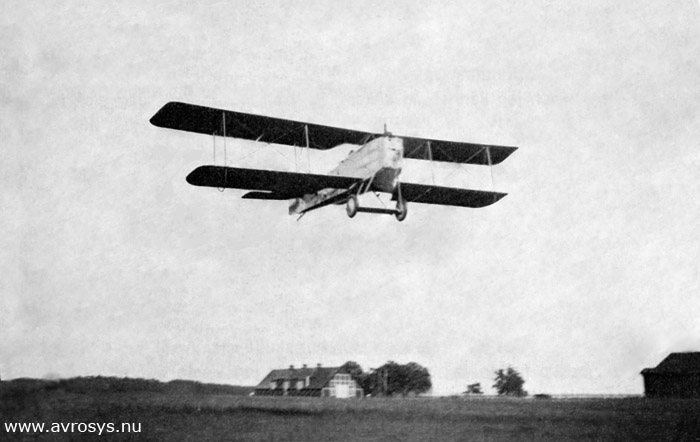|
Louis Bréguet – one of the most important French aviation pioneers –
started the design work of his aircraft number XIV in 1916. In November
the same year the prototype made its maiden flight with Bréguet himself as
pilot.
“XIV” was a rather large and well-equipped two-seat aircraft. Almost the
whole fuselage was constructed of the recently invented light metal
duralumin, covered with canvas. Also parts of the wing structure were made
of this strong but light material. The landing gear was of rugged design
to withstand hard landings. It could be fitted with wheel, skis or floats.
Bréguet 14 was manufactured in different versions. The most common were
designated A2 and B2. In the French classification system of this time,
the first letter indicated the use of the aircraft. A stood for
reconnaissance, B for bomber, C for fighter etc. The digit following the
letter indicated the number of crew. The Bréguet 14 which for some time
belonged to the Swedish Army Aviation Company was of the type A2 - a two
seat reconnaissance aeroplane.
The serial production of A2 and B2 started in 1917. During the time to the
end of World War One, about 5 500 aircraft were ordered. When the
production of Bréguet 14 ceased in 1926, more than 8 000 aircraft had been
built. The aircraft became a commercial success – it was used in 24
different countries.
In June 1919 a Bréguet 14 A2 belonging to the French Armée de l'Air made
an emergency landing near Enköping in Sweden. It was piloted by the
Danish-born aviator Lieutnant Paulli Krause-Jensen, who joined the French
Air Force in 1914. He was making a long distrance flight
Paris-Stockholm-Paris and got trouble with the engine – a 12-cylinder
Renault of 300 hp - on the way home. He left the aircraft in the field and
went to Stockholm to get help. Meanwhile some of the local population
stole a lot of the copper piping that belonged to the fuel system. The
pipes were perfect to use in illicit distilling apparatus. Eventually
Krause-Jensen returned, the fuel system was repaired passably and a new
engine was installed. The aircraft was flown to the air base Malmen near
Linköping. France donated the aircraft to the Swedish government and it
was added to the Swedish Army Aviation Company. It got the registration
number 9100.
The
aircraft never carried any armament.
The Bréguet was never very useful. The fuselage had several extra fuel
tanks and the fuel system was complicated. The system was never fully
restored and the engine never worked in a reliable way. Therefore, the
aeroplane was dismantled and stored.
Photo at top: Bréguet 14 A2 as aircraft 9100 of the Swedish Army
Aviation Company flies over the Malmen military camp.
14
A.2: Length: 8,86
m. Span: 14,40 m.
Height 3,5 m.
Maximum take-off weight: 1900kg.
Max. speed: 165 km/h.
Next page: The story of
Nils Söderberg and the Bréguet 14. |
|
|
For the Model Builder
AZ model, Czech,
has made several plastic model kits of Bréguet 14. To the right you see two
of them, suitable to use for a model of the Swedish 14 A2 in scale 1:72. Kit
AZ7204 (top) has the markings of an aircraft in French service. It includes
etched parts made by Eduard. Kit 7233 has decals for two different Finnsh
markings. It can be fitted with ski or wheel landing gear. It includes some
parts of resin. Click on the thumbnails to get larger images. |
 |


